CHEM 131 Name __________________________________ Quiz 2 – Jan. 27, 2012
advertisement
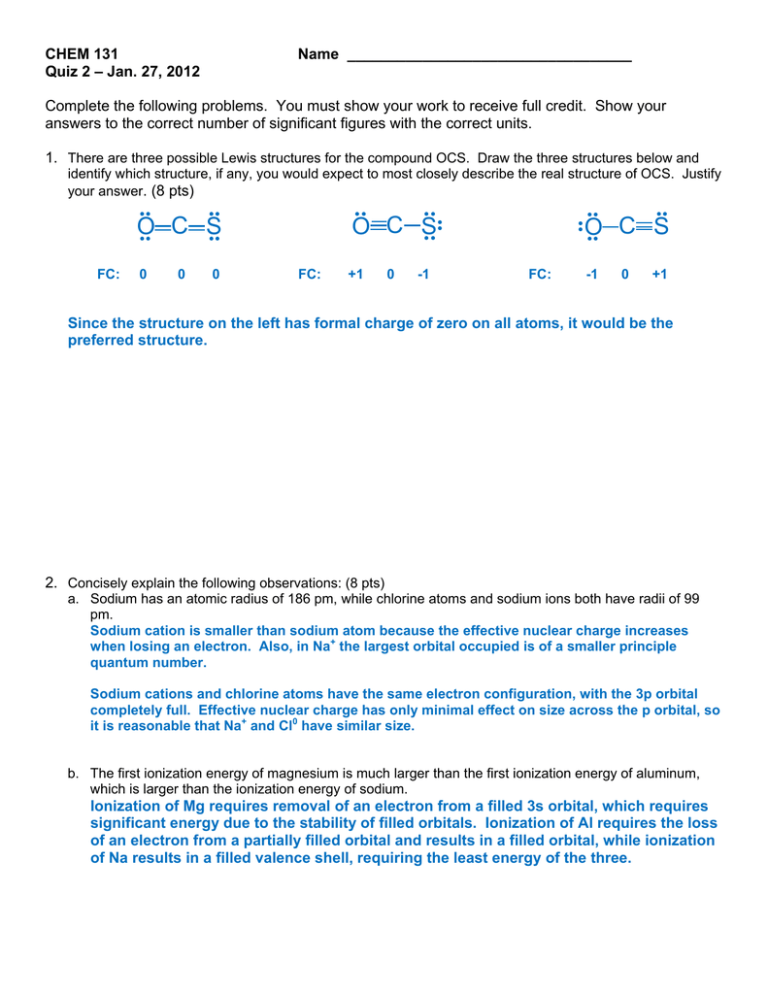
CHEM 131 Quiz 2 – Jan. 27, 2012 Name __________________________________ Complete the following problems. You must show your work to receive full credit. Show your answers to the correct number of significant figures with the correct units. 1. There are three possible Lewis structures for the compound OCS. Draw the three structures below and identify which structure, if any, you would expect to most closely describe the real structure of OCS. Justify your answer. (8 pts) .. .. O .. .. C S 0 0 0 .. .. .. C S O .. FC: +1 0 -1 .. FC: .. .. O C S .. FC: -1 0 +1 Since the structure on the left has formal charge of zero on all atoms, it would be the preferred structure. 2. Concisely explain the following observations: (8 pts) a. Sodium has an atomic radius of 186 pm, while chlorine atoms and sodium ions both have radii of 99 pm. Sodium cation is smaller than sodium atom because the effective nuclear charge increases when losing an electron. Also, in Na+ the largest orbital occupied is of a smaller principle quantum number. Sodium cations and chlorine atoms have the same electron configuration, with the 3p orbital completely full. Effective nuclear charge has only minimal effect on size across the p orbital, so it is reasonable that Na+ and Cl0 have similar size. b. The first ionization energy of magnesium is much larger than the first ionization energy of aluminum, which is larger than the ionization energy of sodium. Ionization of Mg requires removal of an electron from a filled 3s orbital, which requires significant energy due to the stability of filled orbitals. Ionization of Al requires the loss of an electron from a partially filled orbital and results in a filled orbital, while ionization of Na results in a filled valence shell, requiring the least energy of the three. 3. Complete the table below. (8 pts) Orbital 4s orbital 4p orbital 3 2 0 1 Sketch Number of Radial Nodes Number of Angular Nodes Bonus (4 pts): Complete the following table (spelling counts!) Formula Name Fe3(HPO4)3 (should be FeHPO4) iron (II) hydrogen phosphate Mg(NO3)2 magnesium nitrate Possibly Useful Information
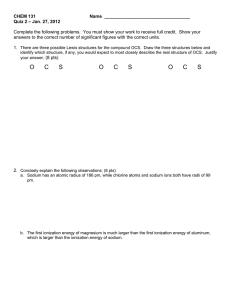

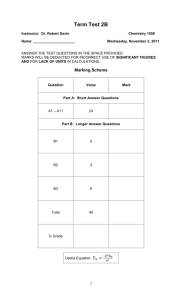
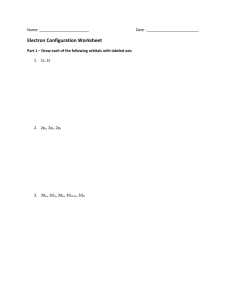

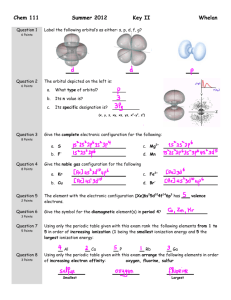
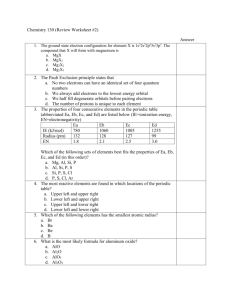
![6) cobalt [Ar] 4s 2 3d 7](http://s2.studylib.net/store/data/009918562_1-1950b3428f2f6bf78209e86f923b4abf-300x300.png)